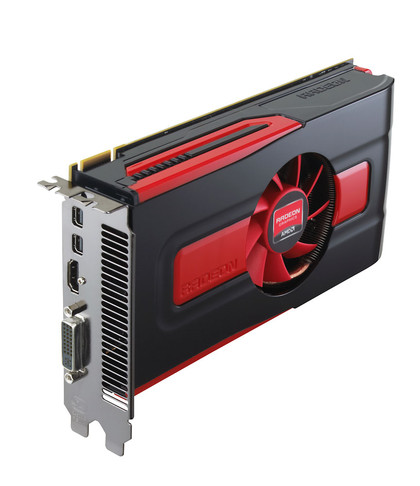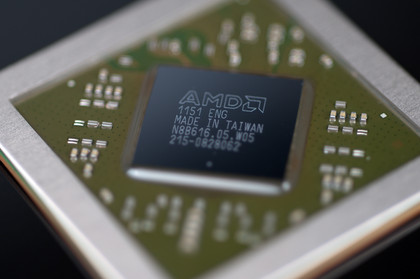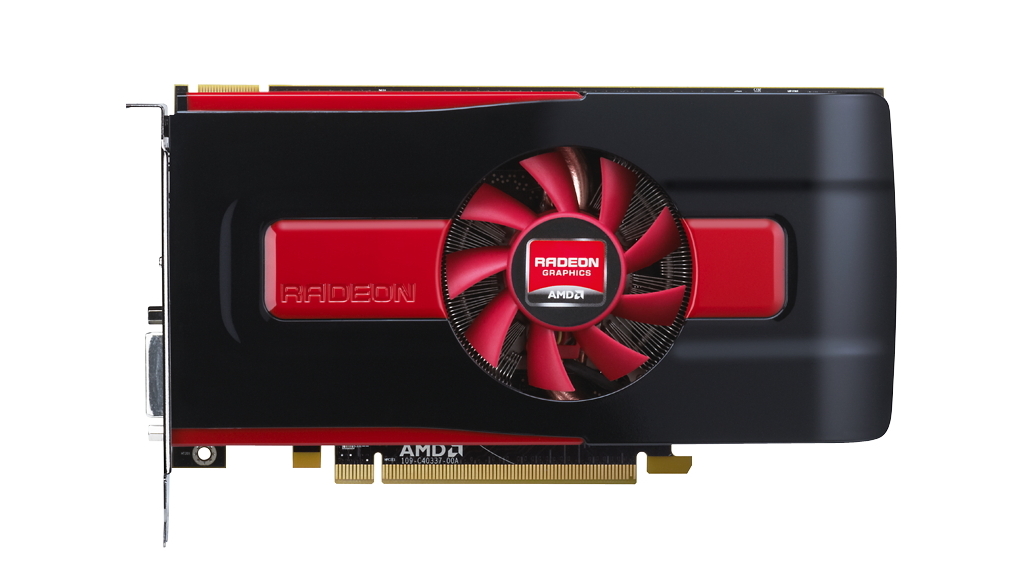Why you can trust TechRadar
Despite losing over 200 stream processors in the cull from the HD 7870's Pitcairn XT GPU architecture, there isn't otherwise a lot lost in the transition to the Pitcairn Pro of the HD 7850.
You still get the now traditional Southern Island goodness in the shape of AMD ZeroCore Power technology, PCI Express 3.0 and a brand new 28nm production process.
You also get the full 2GB GDDR5 framebuffer as well, which AMD is now classing as "entry point for enthusiast-class graphics," as Evan Groenke, Product Manager at AMD said in a recent briefing. "1.28GB just isn't enough."
Why mention 1.28GB?
Well, that's the framebuffer size of the Nvidia-shaped competition. The Nvidia GeForce GTX 570, in lieu of any new cards from the green goblins on the near horizon, is one of the main targets for the HD 7800 series graphics cards.
For the AMD Radeon HD 7850 though the nearest card is really the GTX 560 Ti 448 core edition, again with 1,280MB GDDR5.

In straight performance terms the limited edition Nvidia GTX 560 Ti is a bit of a beast and just about has the edge over this new GCN-powered AMD card.
There are a few cases where the HD 7850 takes the lead and that's thanks to the dual geometry engines making mincemeat of any tessellation road blocks games might throw up.
In both Heaven and Metro 2033 at 2560x1600 the AMD HD 7850 is the faster card. In the Metro 2033 benchmark, twice as fast.
Then you start waving around the magic overclocking wand and suddenly the GTX 560 Ti isn't the competition anymore, it's the Nvidia GTX 570.
We quickly hit the artificial limits of the AMD Overdrive overclocking app, the GPU and memory sliders topping out at 1,050MHz and 1,450MHz respectively. At those speeds the AMD Radeon HD 7850 offers around the same sort of performance figures as the £50 more expensive Nvidia card.
That's some impressive pixel-pusher grunt from a sub-$300 card, even if you do have to push it to the edge to make it really perform.
That said we reckon there's probably a bit further you can push the Pitcairn Pro GPU, good news for those factory overclocked cards that are sure to follow.

Interestingly the reference card we've been testing will look completely different when the add-in board (AIB) manufacturers are done with it.
The tester we've got uses the same cooler design as the Radeon HD 7870, but the manufacturer's cards could well end up coming in less than 8-inches long – the same size as a HD 5770.
We liked
The fact AMD has filled out these lower-caste cards with all the same features as their higher-end brethren is refreshing, as is the fact that we'll get all the HD 7850 goodness in such small footprints as 7.8-inches.
Again, it's the same Graphics Core Next story – the overclocking headroom is immense. The OC path is the only way to get the most out of these cards.
We disliked
Sadly that's also part of the problem. At stock speeds both the HD 7870 and this AMD HD 7850 are rather uninspiring, and it takes ramping up clockspeeds yourself to get the real performance out of them.
That's a bit of a shame as most people probably wont take the risk with their new hardware.
Verdict
These pint-sized cards pack some impressive punch for sub-$300 GPUs, but only if you take the risk overclocking them.
